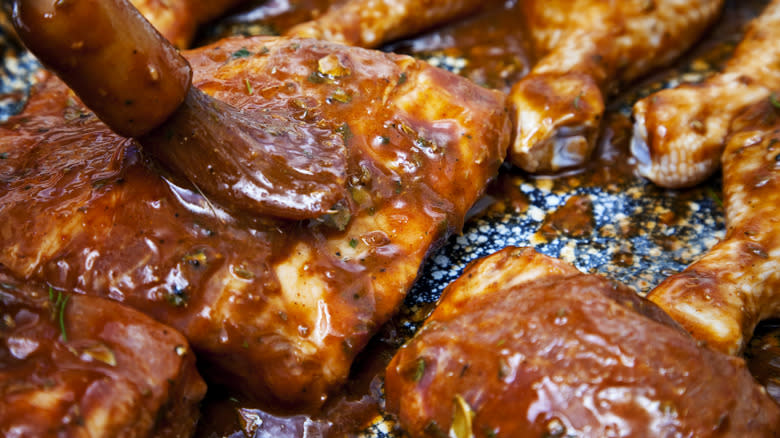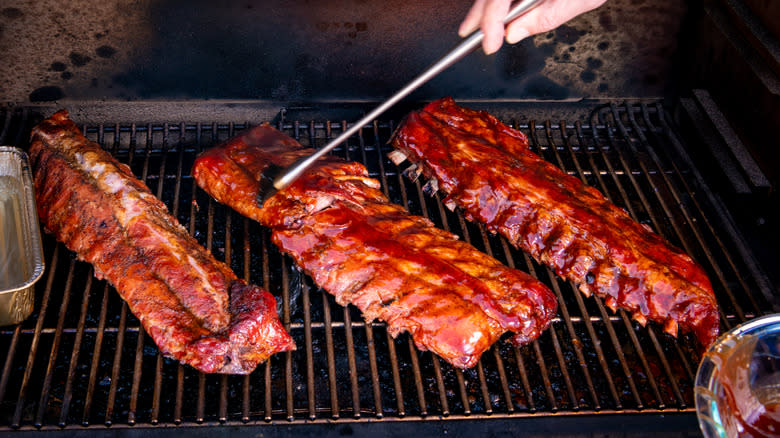We Can Thank The British For This Common Barbecue Technique

Barbecue in the United States has no one font of origin. It doesn't owe its existence to one culture but, rather, is a microcosm of the wonderful and horrific elements of the North American melting pot. Animals, spices, and cooking styles were combined by enterprising people to create what could arguably be called one of the world's most iconic categories of food. Individual elements, though, can be broken out. For example, basting meat as it cooks owes its origins to British colonizers, who added it to the tapestry of barbecue they procured from other cultures they subjugated and otherwise intermingled with.
Sometimes referred to in the barbecue community as mopping, basting is the simple act of spreading a flavorful liquid over meat as it cooks. The idea is to increase the variety of flavors within the meat but also to reintroduce moisture that is sapped out during cooking. Basting liquids can be as simple as water, but are often piquant concoctions that include vinegar, salt, and spices. Every so often, a pitmaster will access their meat and, using a specialized mop, brush, or other device, distribute a thin layer of the liquid over the meat. This then simmers across the surface, adding moisture to the cooking process and drying into a layer of crusty flavor if supplemental elements are used such as spices. Outside of barbecue, one can even butter-baste steaks and fish to add flavor and succulence when pan cooking.
Read more: 13 Underrated Cuts Of Meat You Should Be Grilling
How Did European Basting Come To Barbecue?

Most Americans come to know basting as a technique at a very specific time of year: Thanksgiving. The cooking of the classic holiday turkey is a hotly-debated topic in culinary circles with no shortage of opinions being posited -- even how to do it without a basting syringe. Many state that the bird, classically, should be basted with its own juices or outside liquids to keep it moist in the oven's dry heat. But from whence did this technique arise?
As with a great many elements of the culinary bag of tricks, it is quite nearly impossible to say exactly when people started to brush liquids, flavored or not, onto meat during the cooking process. In fact, we're not even quite settled on the etymology of the word baste, but the best guess is that it is linked to the Old French basser, which means to moisten or soak. As most meat in antiquity was cooked over a live fire or in a large, exposed oven, it makes sense that adding moisture in the form of juices lost during cooking, fat, or other liquid would be returned to the roast to combat dryness. Thus, when European colonists began to synthesize barbecue from the cooking styles of the indigenous peoples of North America as well as kidnapped Africans brought over as slaves, of course they began to incorporate their own technique of basting meat as it smoked slowly over wood fires.
Read the original article on Tasting Table


